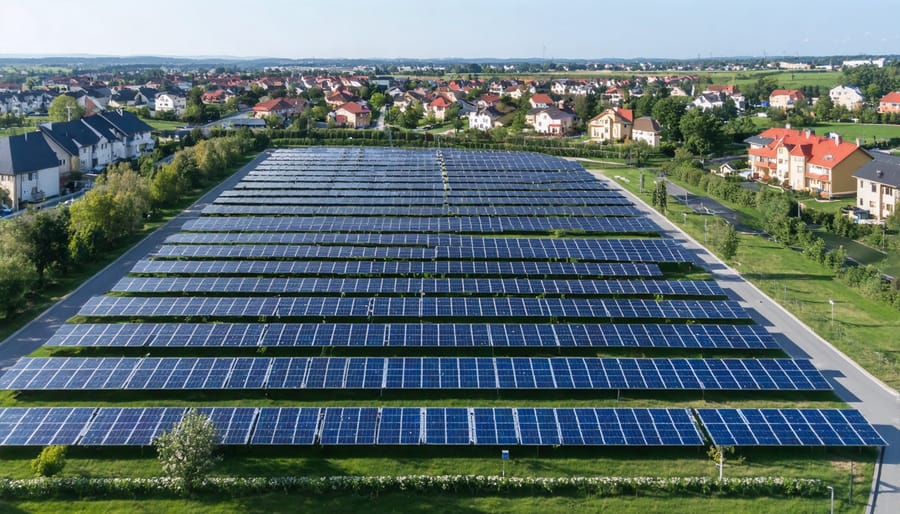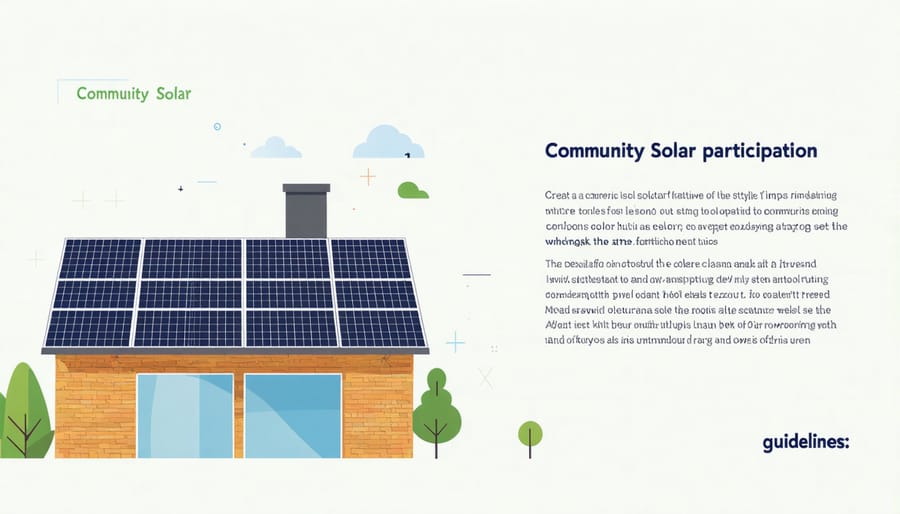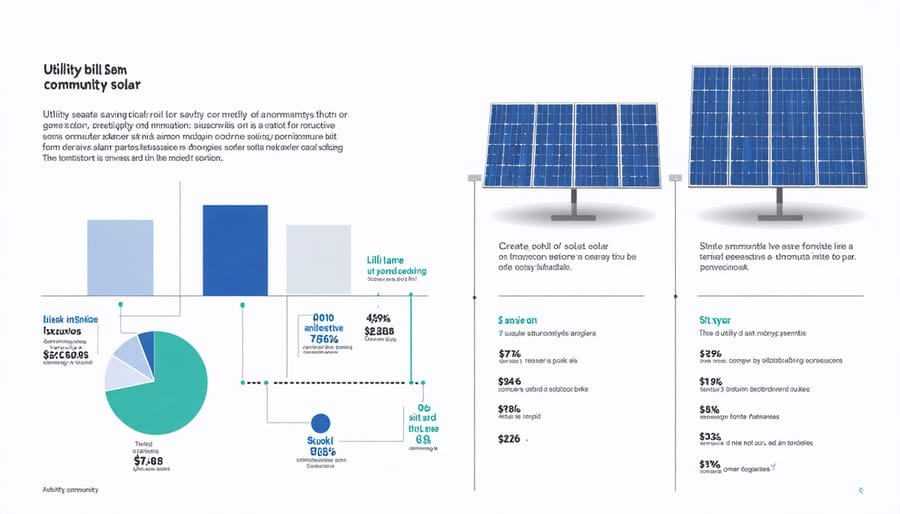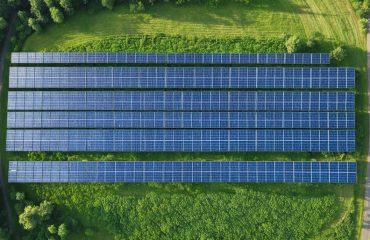Discover how community solar programs are revolutionizing clean energy access across America, making solar power available to everyone—regardless of home ownership or roof condition. From New York’s pioneering shared solar initiatives to California’s innovative virtual net metering systems, states are rapidly expanding their renewable energy options for residents who previously couldn’t access solar power.
These state-specific programs slash electricity bills by 10-20% on average while supporting local clean energy development, all without requiring rooftop installation or significant upfront costs. Currently, 22 states and Washington D.C. have active community solar legislation, with projects generating enough power for over 600,000 households nationwide.
Whether you’re a renter in Massachusetts, a condo owner in Minnesota, or a homeowner in Colorado, understanding your state’s unique community solar landscape opens the door to significant energy savings and environmental impact. As these programs continue expanding nationwide, they’re creating an inclusive path to renewable energy that bridges the gap between traditional solar adoption and universal clean energy access.
What Makes Community Solar Different from Rooftop Solar?
Community solar offers a revolutionary alternative to traditional rooftop solar installations, making clean energy accessible to a broader range of households. Unlike rooftop solar, which requires installing panels directly on your property, how community solar works is through shared solar arrays located off-site in your local area.
This innovative approach eliminates many common barriers to solar adoption. You don’t need to own your home, have a suitable roof, or make any upfront investments in equipment. Instead, you subscribe to a portion of a larger solar farm’s output, and the energy generated is credited directly to your utility bill.
The advantages of community solar are numerous. First, there’s no installation or maintenance required on your part – professional operators handle all technical aspects. Second, you can start saving on energy costs immediately without paying for expensive equipment. Third, if you move within your utility’s service area, you can typically take your subscription with you.
Community solar also offers more flexibility than rooftop installations. You can adjust your subscription size based on your needs, and there’s no long-term commitment to maintaining physical infrastructure on your property. This makes it an ideal option for renters, condo owners, and homeowners whose properties aren’t suitable for solar panels.
Additionally, community solar projects often benefit local communities by creating jobs, generating tax revenue, and helping achieve regional clean energy goals. They can also make use of otherwise unused land, such as former industrial sites or agricultural areas, transforming them into productive clean energy generators.
For many households, community solar represents the most practical and accessible way to participate in the clean energy transition while enjoying reduced electricity costs. It combines the environmental benefits of solar power with the convenience of traditional utility service, creating a win-win situation for subscribers and their communities.

Leading States in Community Solar Success

Minnesota’s Solar Garden Model
Minnesota’s community solar garden program stands as a shining example of successful renewable energy policy in action. Launched in 2013, the program has grown to become the largest community solar market in the United States, with over 800 megawatts of operational capacity serving thousands of households across the state.
The program’s success stems from its innovative subscription model, which allows residents, businesses, and public entities to subscribe to a portion of a solar garden’s output without installing panels on their property. Subscribers typically save 5-15% on their electricity bills, making it an attractive option for budget-conscious consumers.
What sets Minnesota’s model apart is its inclusive approach. The program requires that each solar garden must have at least five subscribers, with no single subscriber taking more than 40% of the output. This structure ensures broad community participation and prevents monopolization by large users.
Local utilities, particularly Xcel Energy, play a crucial role by purchasing the electricity generated by these gardens and crediting subscribers’ bills accordingly. This streamlined billing process makes participation simple and hassle-free for residents.
Massachusetts SMART Program
Massachusetts leads the way in renewable energy with its Solar Massachusetts Renewable Target (SMART) program, making community solar more accessible and affordable for residents. This innovative program offers predictable, long-term financial incentives for solar project owners while providing subscribers with guaranteed savings on their electricity bills.
Under SMART, community solar participants typically save 10-15% on their monthly electricity costs without installing panels on their property. The program particularly benefits renters, condo owners, and homeowners whose properties aren’t suitable for rooftop solar installations.
The SMART program features a declining block incentive structure, meaning early adopters receive higher incentive rates. Additional incentives are available for projects that incorporate energy storage or serve low-income communities. Massachusetts residents can join by subscribing to a local community solar project through approved providers, with no upfront costs and the flexibility to transfer or cancel their subscription if they move within the utility’s service area.
This program has successfully supported hundreds of community solar projects across the state, helping Massachusetts maintain its position as a national leader in renewable energy adoption.
Colorado’s Community Solar Gardens
Colorado stands as a pioneer in community solar, having passed the Community Solar Gardens Act in 2010 – the first legislation of its kind in the United States. This groundbreaking law established a framework for residents to access solar power without installing panels on their own property. The program allows subscribers to receive credits on their electricity bills based on their share of the solar garden’s power production.
The success of Colorado’s model has inspired many other states to develop similar programs. Colorado continues to expand its community solar initiatives, with gardens ranging from 100 kilowatts to 2 megawatts in size. Participants can include homeowners, businesses, and even low-income residents who benefit from dedicated program allocations. The state’s commitment to accessible solar power has made it easier than ever for Coloradans to embrace clean energy while saving on their monthly utility bills.
Emerging State Programs to Watch
Several states are making exciting strides in developing new community solar programs, offering fresh opportunities for residents to access clean, affordable energy. New Mexico’s recently launched program aims to achieve 200 megawatts of community solar capacity by 2024, with a strong focus on serving low-income households and native communities. The program’s innovative subscription model allows participants to save up to 30% on their electricity bills.
Delaware is rolling out a pilot program that specifically targets renters and apartment dwellers, addressing a crucial gap in solar accessibility. The program’s simplified enrollment process and consumer protection measures make it particularly promising for widespread adoption.
Ohio’s emerging community solar initiative focuses on brownfield redevelopment, turning unused industrial sites into solar gardens. This approach not only provides clean energy but also revitalizes communities and creates local jobs. The program includes innovative financing options that make participation accessible to households across various income levels.
In Virginia, a newly expanded program aims to develop 150 megawatts of community solar by 2025, with at least 30% reserved for low- and moderate-income subscribers. The program’s success lies in its straightforward billing system and strong consumer protections.
Kentucky’s pilot program is noteworthy for its unique partnership approach, bringing together rural electric cooperatives and local governments to develop community solar projects. This collaboration ensures broader access and more competitive pricing for participants.
These emerging programs share common elements that signal future success: strong consumer protections, emphasis on accessibility for all income levels, and simplified participation processes. As these programs mature, they’re likely to serve as models for other states developing their own community solar initiatives, potentially revolutionizing how Americans access solar energy.
How to Join a Community Solar Program
Getting started with a community solar program is easier than you might think. The first step is to check your eligibility by verifying that your utility company participates in community solar and that your home falls within the service area. You can do this by visiting your utility provider’s website or calling their customer service.
Once you confirm eligibility, you can join a community solar program by following these simple steps:
1. Research available projects in your area through your utility company or local solar developers
2. Compare subscription options and pricing models
3. Review the contract terms, including subscription length and cancellation policies
4. Submit your application with required documentation
5. Sign the agreement and set up your billing preferences
Most programs offer flexible payment options, including pay-as-you-go plans or monthly subscriptions. You’ll typically receive two bills: one from your utility company and another from the community solar provider. However, your total energy costs should be lower than before joining the program.
The enrollment process usually takes 2-4 weeks, and you’ll start seeing credits on your utility bill within 1-2 billing cycles. Many providers offer online portals where you can track your solar credits and environmental impact.
Remember to ask about any special promotions or incentives for new subscribers, as many programs offer sign-up bonuses or reduced rates for early adopters. If you’re renting, check with your landlord first, though many programs now welcome renters with their utility accounts.
Financial Benefits and Savings Potential
Community solar programs offer substantial savings opportunities for participants, typically ranging from 5% to 15% off their regular electricity bills. These savings accumulate monthly and can amount to hundreds of dollars annually for the average household. The beauty of community solar lies in its accessibility – there’s usually no upfront cost to join, and subscribers can start saving immediately.
Many states enhance these benefits through various financial incentives, including tax credits, rebates, and renewable energy certificates. For example, some states offer Solar Renewable Energy Credits (SRECs) that participants can sell for additional income. Low-income households may qualify for extra savings through specialized programs, making solar power more accessible to all community members.
The subscription model eliminates traditional barriers to solar adoption, such as homeownership requirements or roof compatibility issues. Participants typically sign flexible agreements that allow them to cancel or transfer their subscription if they move within their utility’s service area. This flexibility, combined with guaranteed savings on electricity bills, makes community solar an attractive option for both renters and homeowners.
Most programs also protect subscribers from rising utility rates, offering predictable energy costs for years to come. This long-term price stability helps households better manage their budgets while contributing to a cleaner energy future.

Community solar programs represent a groundbreaking solution for clean energy access, making solar power available to everyone regardless of home ownership or roof conditions. As these programs continue to expand across states, more Americans can enjoy reduced energy bills while contributing to a sustainable future. Whether you’re a renter, homeowner, or business owner, community solar offers a simple way to support renewable energy without the need for personal installation or significant upfront costs. By participating in these programs, you not only save money but also join a growing movement of environmentally conscious citizens working together to create cleaner, more resilient communities. With flexible subscription options and increasing state support, there’s never been a better time to explore community solar as your pathway to affordable, sustainable energy.









